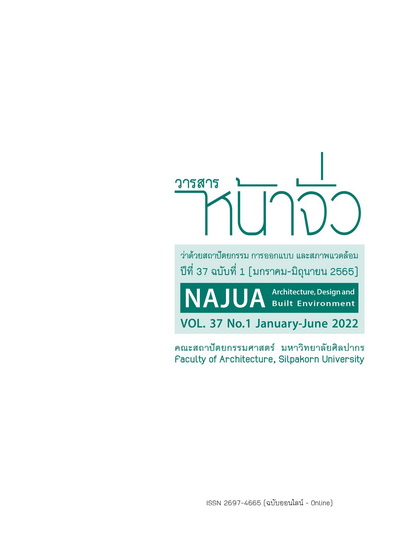Risk factors for subcontractors in the upper North region, Chiangmai province
Keywords:
ASEAN policy, Chiang Mai, ConstructionAbstract
Under the topic of ASEAN policy blueprints that describe being a region with economic development, it is necessary to develop small and medium enterprises in the ASEAN region. Construction business is a business that has various risks which also are very high for its operation. At present, residential construction projects often have obstacles in construction, are unable to achieve the operational objectives. This study of risk factors that derived from the contractors’ perspective and how they response to the risks found that all risk level indices were at moderate level in which there is no high level of risk. The categories that have the highest risk index are personnel in the organization, followed by the contract for construction, disbursement, bidding and the entry of contractors from other cities. The category that has the least risk index is external factors. The impact of the risk, results of this study found that most risk events have the greatest impact on the construction cost according to the opinions of sample group, followed by quality, time and scopes of work respectively.
References
Faniran, O. O., & Caban, G. (1998). “Minimizing Waste on Construction Project Sites”. in Engineering Construction and Architectural Management, 5(2).
Karim, K., & Marosszeky, M. (1999). Waste Minimisation in Comercial Construction: A handbook for training of supervisors. Australian Centre for Construction Innovation, New South Wales.
Khumpaisal, S. (2007). “Risks in the Construction Project Procurement Process and the Mitigation Methods”. In Journal of Architectural/Planning Research and Studies. Volume 5.
Khumpaisal. S. (2011). Analytic Approach to Risk Assessment in Thailand’s Real Estate Development Industry. PhD. Thesis. School of the Built Environment, Faculty of Technology and Environment, Liverpool John Moores University, Liverpool. UK
Nawawit Kosai.(2008). People Management - Important Factors of Construction Management. Accessed February 18, 2008 from http://www.thaiengineering.com/article/civil/construction_management/cpm.asp.
Nirattisai Tumwongsa. (2016). “Quarterly Industry Outlook Report”. in Construction business. https://www.krungsri.com/bank/getmedia/aa7cbf22-3cf5-4a3a-a1de-4fd12e7afecc/THQIR_CONS_2Q17_TH.aspx
Office of Academic Services Chiang Mai University (2018). Briefing Chiang Mai Province. http://www.chiangmai.go.th/managing/public/D8/8D01Feb2017150134.pdf
Office of the National Research Council of Thailand (2009). Risk Management Plan.
Osipova Ekaterina. (2008). Risk management in construction projects: a comparative study of the different procurement options in Sweden.
Osipova. E. & Apleberger. L (2007). “Risk management in different forms of contract and collaboration - case of Sweden”. In Proceeding of CIB World Build Congress “Construction for Development”. Cape Town: South Africa.
R. Max Wideman (1992). Project and Program Risk Management: A Guide to Managing Project Risks and Opportunities.
Wideman, R. M. (1992). Project and Program risk management: A Quide to Managing Project Risks and Opportunities. Project management institute.
Downloads
Published
How to Cite
Issue
Section
License

This work is licensed under a Creative Commons Attribution-NonCommercial-NoDerivatives 4.0 International License.





